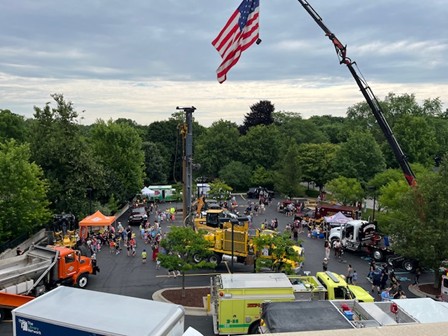If you were a passerby you may have spotted the fire or smoke on the afternoon of April 6. It was a prescribed burn of 10 acres of tall grass prairie along Merlin Way.
The Sun Times News connected with the property owner and Scio Township resident, David Read, to ask about it. This is a burn he’s done before. This latest one was with David Borneman and crew, who are out of Ann Arbor and since 2000 have been providing experienced ecological restoration services throughout the Midwest, specializing in controlled burns.
Read said they burn for several reasons.
“Primarily, it keeps the thatch (the matted dead grass) from building up,” he said. “After only two years, the thatch was six- nine inches thick.”
He said burning it off:
– returns much of the nutrients to the soil
– it leaves the soil black which helps warm up the soil to boost the growth of the warm season (i.e.: native) grasses and forbs
– it helps control invasive trees and shrubs
Read said, “Native Americans did this for centuries, although maybe not in such a controlled manner, probably to clear the area for easier hunting and travel. The native plants evolved in this environment and are more resistant to fire damage than the invasive plants.”
According to Borneman’s webpage, a “prescribed burn is done carefully and deliberately, with safety equipment on hand to monitor and control its spread. The burn is planned and executed to minimize the amount of smoke produced and to direct it away from smoke-sensitive areas as much as possible. All burns are done with the cooperation and approval of local, and occasionally, county fire department authorities, who issue permits for burns to be conducted. Weather conditions, personnel, equipment, and other parameters needed for the burn to be conducted safely are outlined beforehand. Prior to burning, temporary ‘burn breaks’ are created around the area to be burned to help manage the fire and delineate the exact boundaries of the burn site.”






 8123 Main St Suite 200 Dexter, MI 48130
8123 Main St Suite 200 Dexter, MI 48130


